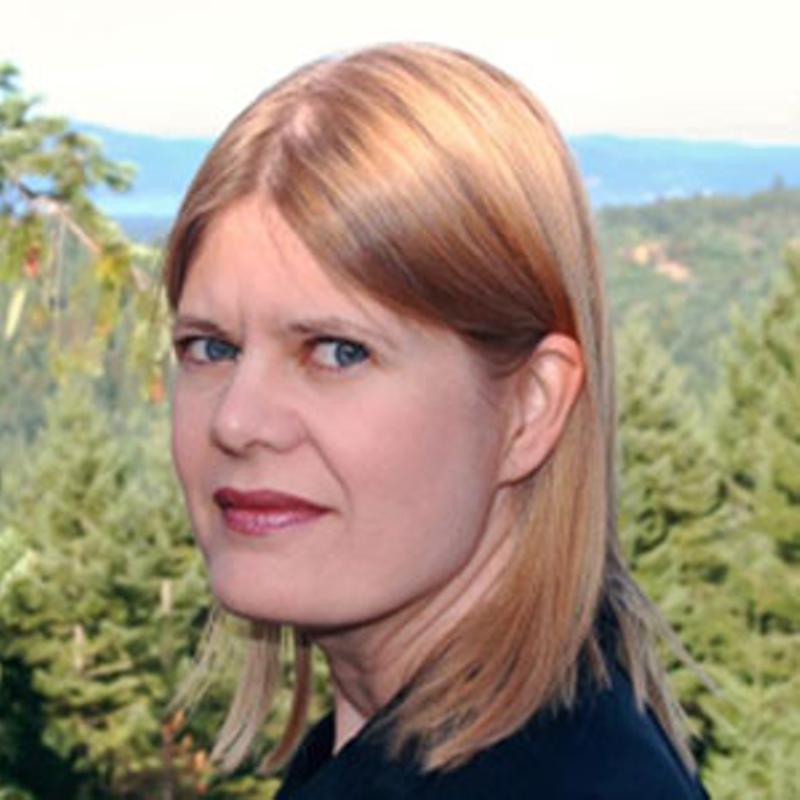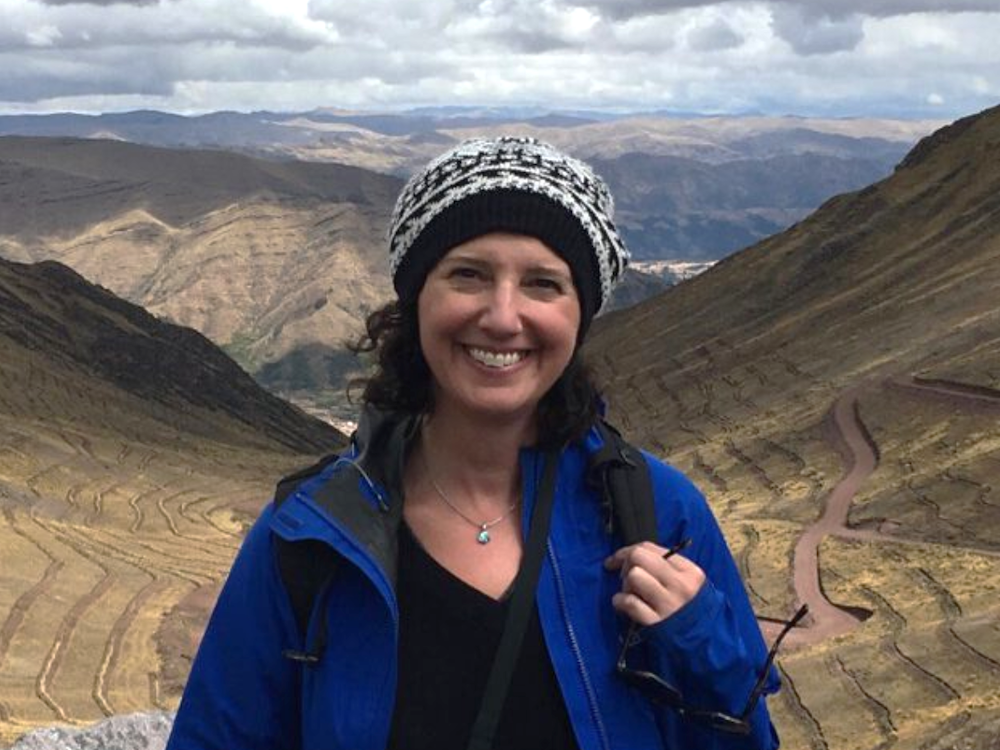In her groundbreaking book Water Always Wins: Thriving in an Age of Drought and Deluge, environmental journalist and National Geographic Explorer Erica Gies observes, “If water were a category in a game of rock, paper, scissors, water would beat them all every time.”
At a time when drought, fire and flood threaten countless lives, Gies talks to water experts who are using cutting-edge science and Traditional Knowledge to show how our relationship to water must change if we want to survive. She takes the reader inside water projects ranging from the marshlands of Iraq to the highlands of Peru, as well as nearer to home in B.C. and California, uncovering a breathtaking complexity we ignore at our peril. The result is a riveting and engaging book that does for water what Suzanne Simard has done for trees.
On Tuesday, Oct. 3, Gies, winner of the Rachel Carson Award for Excellence in Environmental Journalism, will give the prestigious Harvey S. Southam lecture at the University of Victoria, a free public talk organized by UVic’s department of writing.
In this preview she spoke of the dangerous illusion that we can control water; the trouble with dikes, dams and development; what she learned from losing a beloved place to wildfire; and the transformative idea of asking what water wants. Our conversation has been edited for length and clarity.
Deborah Campbell: It feels like we hear more news every day about floods and droughts. Can you talk about what you mean by “water always wins”?
Erica Gies: We tend to see water as a thing, either a commodity or a threat. So much of our development has been about subverting water’s natural pathways and habits. That worked to a point. But now that we have more than eight billion people, with 75 per cent of the world’s land area altered by human activity, the natural systems are breaking down. That’s a big part of the reason we’re seeing this increase in frequency and severity of flood and drought. Again and again we see that if you fill in a wetland and build something on top of it, that’s often the first area to flood.
Water has relationships with soil and rock and microbes and beavers and people. Water has memory. Water goes where it wants to go. We think that we can control it, but that is an illusion. Our dominant culture has a single-solution focus, whether dam-building or piping in water or desalination, so we’re ignoring these complex systems. And in doing that we’re destroying them. We’re undermining ourselves because these ecosystem services are doing so much for us.
In B.C. we’re talking of bolstering dikes and seawalls. Until I read your book I hadn’t really understood the limitations of this approach. Can you speak to those limitations?
Water people like to joke darkly that there are two kinds of levees: those that have failed and those that are going to fail. When you look at the Fraser Valley that flooded so dramatically in 2021, the only surprise is that it didn’t happen sooner. It was such an audacious engineering undertaking: to stymie the paths of four rivers, and to muscle this dry land from a large natural lake that had been there for thousands of years. On the coasts, the world has seen six to nine inches of sea level rise over the last hundred years, but scientists are predicting up to eight feet (two metres) of sea level rise by 2100.
It’s impossible to build walls around everything. One: it’s incredibly expensive. Two: it requires ongoing upkeep. And when you have a hard wall and water is hitting it, you’re deflecting that energy somewhere else, so it might work in one place but then damage another.
There are many natural ecosystems that serve as buffers. Tidal marshes can actually keep pace with sea level rise if they have enough space, time and sediment. Other natural ecosystems that protect coastal areas include eelgrass beds, coral reefs, mangrove forests, barrier islands, even a gravel beach. Like a football player who rolls when tackled, diffusing that energy of being hit, it’s the same thing with water if it’s hitting a living ecosystem or gravel, but you have to make space for that.
You talk about how climate change is far from the only factor in rising droughts and floods. Can you explain?
I’ve been a climate reporter for 20 years and I’m glad people are recognizing that human-caused climate change is real, but in some circles it’s become all about fossil fuel emissions, when a significant factor is our development choices and the extent to which we’ve destroyed ecosystems. That’s because with urban sprawl, industrial agriculture, logging and the control-oriented way we try to manage water, we’ve dramatically altered the water cycle.
We have filled or drained as much as 87 per cent of the world’s wetlands. We’ve dammed and diverted two-thirds of the world’s large rivers. The area of cities has doubled just since 1992, covering the land in pavement.
And when you have pavement, the water can’t sink in. So first it floods, then we try to get rid of the water quickly. Then we don’t have it for later, and we suffer water scarcity.
You’ve coined the term Slow Water to describe working with water’s natural processes, which you compare to the Slow Food Movement. Can you elaborate?
Like Slow Food, Slow Water works with local geology, ecology and culture to figure out how to make space for that place’s natural slow phases of water, respecting its agency and relationships. Slow Water means systems thinking rather than single-focus solutions. Projects are distributed across the landscape rather than centralized. Slow Water solutions are also local and environmentally just.

Just as levees (dikes) are an environmental injustice, protecting some while sacrificing others, so are dams and reservoirs. A 40-year overview of dams around the world found that dams brought water to 20 per cent of the world’s people but decreased water to 24 per cent of the world’s people. And Slow Water is community driven, managed or facing.
Some of this comes up against development pressure. There’s a massive building boom going on, for instance, to house a fast-growing population, even in places where water is scarce. Does this mean there might be places we shouldn’t build?
Yes. There’s a problem of policy motivations. Developers build something, sell it and move on, so they don’t have an incentive to care what happens. And cities want development because a lot of money comes from new property taxes. But it’s really short-sighted because the municipality or province is going to be on the hook to deliver sewage, clean water, accessible roads, and those things are quickly going to become astronomically expensive to maintain as sea levels rise, flood plains are encroached and water is overused.
In the case of water scarcity, a field called sociohydrology has documented how, again and again, when people bring water into an area, water consumption just increases. That’s because it doesn’t encourage conservation or living within local means but instead more development, more agriculture, more waste — and then you have water scarcity again.
And here in B.C. we’re experiencing another record year of drought. We’re seeing wells run dry and rivers no longer high enough to sustain fish. It seems we’re reaching limits in what used to be considered rainforest.
The thing a lot of people are overlooking is that it’s not just climate change. It’s our land use practices. In so many places we have desiccated the natural ecosystem that is a significant part of the water cycle.
I just did some reporting that will appear in Nature about cutting-edge research on the role of plants in the water cycle. I think we all know that plants and soil evapo-transpire water into the air, which is a factor in creating rain. But one interesting finding is that, over continents, depending where you are, 10 to 80 per cent of the rain that falls comes from soil and trees, not the ocean.
So if we’re cutting down forests, if we’re overgrazing grasslands, if we’re paving, if industrial agriculture is drying out the soil by plowing, killing soil organisms with pesticides, and only keeping plants on the land part of the year, we reduce plants’ and soil’s ability to release water into the air and form rain.
Other new research is finding that the logging industry is a significant factor in forest fires. When you have a healthy, intact, old-growth forest, you have conifers, broadleaf tree species, understorey bushes, dead and decaying material on the ground, which is great at keeping the soil moist. And healthy soil has a significantly higher percentage of organic matter, making it much more absorbent.
When you clear cut, you’re removing the material that contributes to the natural humidity of the area. Often you’re also using glyphosates to kill species you don’t want. So there’s much less moisture in the plants, less life in the soil, and they are much more flammable, ready to burn.
I understand that fire can also seal the soil, so after the fire comes flood.
It depends on the fire, and it depends on the area, but you’re talking about a phenomenon known as being hydrophobic: afraid of water. And it’s much more common in a commercial plantation than a natural forest because the fire there is burning much hotter. Fire is a natural part of many ecosystems, and many Indigenous Peoples had a tradition of prescribed burns to manage the ecosystem for the plants they wanted to harvest and to keep the system healthy.
My family has had a cabin in northern California, near Lassen Volcanic National Park, for five generations. It’s a place that is very special to me, and it burned in the Dixie fire two years ago, which was, I believe, the largest fire in California to that point. I went back there for the first time this summer and it was very emotional to see it now. I won’t see it again like it was in my lifetime.
But the difference between the national park, which had been left largely in its natural state, and the commercial logging forest around it, was night and day. The commercial forest was a hellscape. There was nothing living. Whereas the national park had really lush understorey plants and seedlings coming up. There were birds and butterflies.
And some of the trees even had living matter still, so some of them may survive. Even in areas where much was burned, there were pockets where things hadn’t burned. Whereas the commercial forest is just, you know, dead.
A lot of people can now relate to seeing places they loved destroyed by fire or flood. Can you leave us with a final thought?
We need to change the culture of how we think about water. We’ve had this really control-oriented mindset, but that kind of thinking is causing problems for us. So that’s why I say we need to ask, “What does water want?”
One thing I find really inspiring is what communities can do with their neighbours to buffer themselves from flood and drought by making room for water. Now it’s really a matter of bringing this into the mainstream conversation, so more people understand what water wants and how water actually works.
This year’s Harvey S. Southam lecture, organized by UVic’s department of writing and free to the public, will be delivered by award-winning environmental journalist and National Geographic Explorer Erica Gies on campus at UVic at 3 p.m. on Oct. 3. Read more on the UVic website. ![]()
Read more: Environment

















Tyee Commenting Guidelines
Comments that violate guidelines risk being deleted, and violations may result in a temporary or permanent user ban. Maintain the spirit of good conversation to stay in the discussion and be patient with moderators. Comments are reviewed regularly but not in real time.
Do:
Do not: